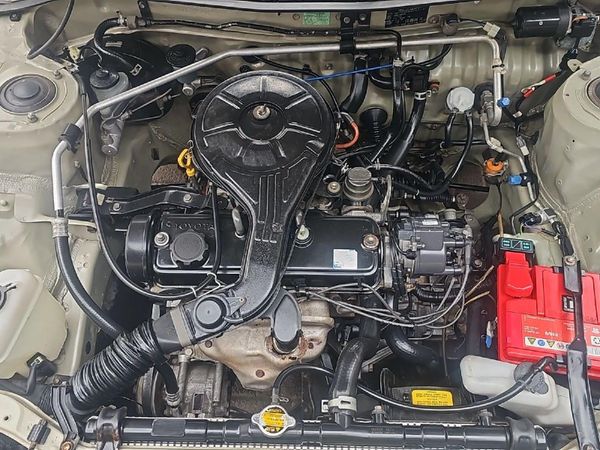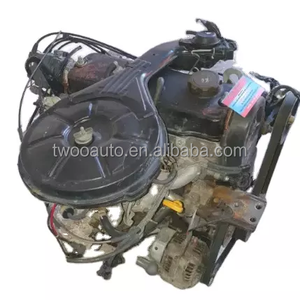Toyota Tazz: Essential Maintenance Tips to Keep Your Car Running Smoothly
Toyota Tazz: Essential Maintenance Tips to Keep Your Car Running Smoothly
Blog Article
Discover the current Patterns in Engine Technology With Tazz
In the swiftly progressing landscape of automobile technology, Tazz stands at the leading edge, highlighting considerable developments in engine systems that focus on both technology and sustainability. tazz. From hybrid engines that optimize gas performance to the development of hydrogen fuel cells, the trends forming modern powertrains are not only improving efficiency yet likewise addressing vital environmental difficulties. As the sector remains to push borders, it is necessary to think about exactly how these developments will certainly affect future transport remedies and the more comprehensive implications for worldwide energy usage. What exists ahead in this essential change?
Crossbreed Engine Innovations
Hybrid engine innovations represent an essential change in automobile technology, incorporating the benefits of internal burning engines with electric propulsion systems. This assimilation not just boosts fuel efficiency yet also reduces exhausts, meeting increasingly strict environmental regulations. By utilizing both power sources, hybrid engines can maximize efficiency, supplying power when required while conserving fuel throughout less demanding motoring conditions.
Recent developments in crossbreed technology include enhancements in battery efficiency and regenerative stopping systems. These developments permit better power recovery throughout slowdown, which can be rerouted to assist in velocity or power auxiliary systems. Suppliers are focusing on small layouts and lightweight products to make the most of the effectiveness of hybrid powertrains.
The development of plug-in hybrids has actually also expanded the market, allowing motorists to charge their cars utilizing common electrical outlets. This attribute typically permits considerable all-electric array, further reducing dependancy on typical fuels. tazz. As the automobile industry remains to develop, hybrid engine innovations are anticipated to play a vital duty in connecting the space in between standard automobiles and completely electric versions, offering a transitional option that satisfies diverse consumer needs and preferences
Advancements in Electric Powertrains
The automobile landscape is swiftly progressing, with electric powertrains becoming a leading pressure in sustainable transportation. Breakthroughs in electrical automobile (EV) modern technology are substantially improving performance, customer, and performance experience. Key technologies consist of enhancements in battery chemistry, which have increased energy density, reduced charging times, and expanded general battery life.
Solid-state batteries, for instance, promise to revolutionize the marketplace by offering higher security and effectiveness compared to conventional lithium-ion cells. Innovations in regenerative stopping systems are making it possible for lorries to recover power during deceleration, adding to overall efficiency.
In addition to battery modern technology, electrical motor designs are becoming much more innovative. Technologies such as integrated motors and progressed thermal management systems are aiding to maximize power delivery and lower weight, ultimately improving car characteristics.

Collectively, these advancements highlight the dedication to change towards cleaner, much more effective transportation options, positioning electric powertrains at the center of vehicle technology.
The Rise of Hydrogen Fuel Cells
Progressively, hydrogen gas cells are acquiring traction as a feasible choice to standard internal burning engines and battery electrical automobiles. This innovation takes advantage of the chemical power saved in hydrogen, transforming it right into electrical power via an electrochemical reaction with oxygen. The key by-product of this process is water, making hydrogen gas cells an eco-friendly choice with no emissions at the tailpipe.

Automakers are significantly buying hydrogen fuel cell technology, recognizing its capacity for long-range applications and rapid refueling capacities that rival traditional gas. In addition, markets such as heavy-duty transportation and public transportation are specifically appropriate for hydrogen gas cells, where battery electric options might fall short because of weight and range restrictions.
As research and financial investment proceed to expand, hydrogen gas cells are positioned to play a significant role in the future landscape of clean transport and power solutions.
Enhancements in Internal Burning Engines
Technologies in internal burning engine (ICE) technology are transforming standard cars to fulfill contemporary ecological criteria and efficiency assumptions. Among the most significant improvements involves the integration of sophisticated fuel injection systems. These systems maximize the air-fuel mix, boosting burning effectiveness and causing reduced discharges. Direct gas injection, for example, enables for far better atomization of fuel, resulting in more full burning and enhanced power result.
Additionally, turbocharging has actually acquired prominence, enabling smaller sized engines to provide higher performance without the weight of larger engines - tazz. This innovation not just improves performance yet also contributes to reduce fuel intake. Variable shutoff timing systems are additionally being fine-tuned, enabling engines to adapt to numerous driving problems for improved torque and responsiveness
Moreover, using light-weight products in engine building is ending up being standard, more boosting gas efficiency by decreasing total automobile weight. Engine control units (ECUs) are significantly advanced, enabling real-time adjustments that enhance performance and exhausts.
These improvements collectively indicate a crucial shift in ICE technology, aligning with international sustainability objectives while still supplying the efficiency vehicle drivers anticipate from their lorries. As the industry develops, these improvements proceed to visit this web-site shape the future of typical automobile design.
Future Patterns in Engine Performance
Substantial advancements in engine effectiveness are expected as makers focus company website on integrating innovative innovations to meet rigorous ecological laws and consumer needs. The change in the direction of electrification, hybrid systems, and alternate fuels is improving the automotive landscape, driving innovations that improve fuel economy and reduce emissions.
Among the key patterns is the application of sophisticated products and producing techniques. Light-weight composites and high-strength alloys add to decreased vehicle weight, hence enhancing total effectiveness. Furthermore, the adoption of turbocharging and variable valve timing technologies permits enhanced power outcome from smaller engines, even more improving fuel economic situation.

Final Thought
Finally, the expedition of engine technology discloses significant advancements that prioritize sustainability and effectiveness. Technologies in hybrid engine systems, electrical powertrains, and hydrogen fuel cells demonstrate a commitment to decreasing discharges while improving efficiency. Enhancements in interior burning engines and an emphasis on lightweight products add to total engine performance. As the auto industry continues to evolve, these fads will you can look here certainly play an essential function in shaping a cleaner and more lasting future for transportation.
From crossbreed engines that optimize fuel efficiency to the development of hydrogen gas cells, the trends shaping contemporary powertrains are not just improving performance yet also dealing with important ecological challenges.Crossbreed engine advancements represent an essential change in automotive innovation, integrating the advantages of interior burning engines with electric propulsion systems.In addition, turbocharging has gotten importance, enabling smaller engines to supply greater performance without the weight of bigger engines. In addition, the adoption of turbocharging and variable shutoff timing technologies enables for boosted power result from smaller sized engines, further improving fuel economic situation.
Improvements in inner burning engines and a focus on light-weight products contribute to overall engine performance.
Report this page